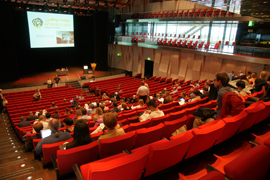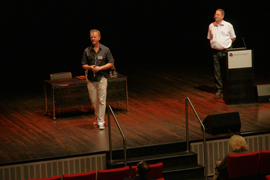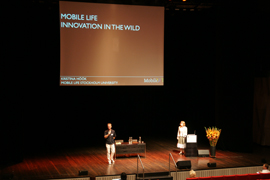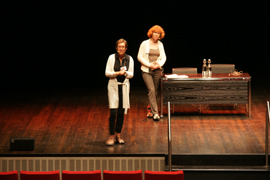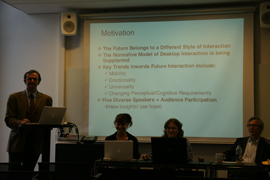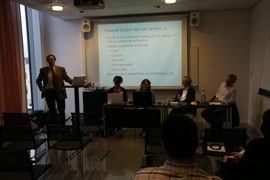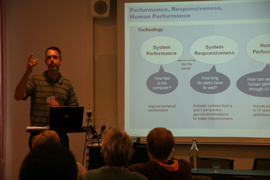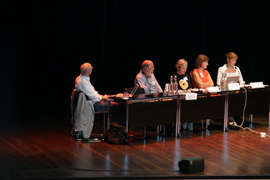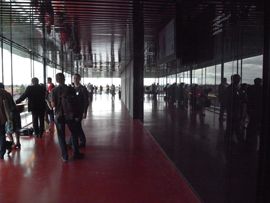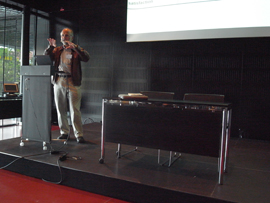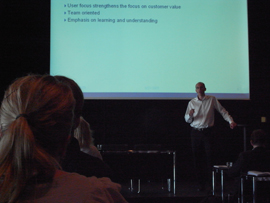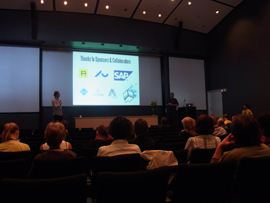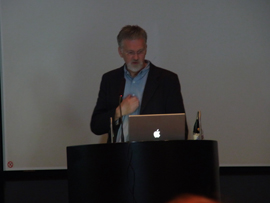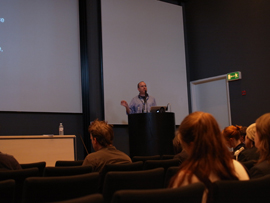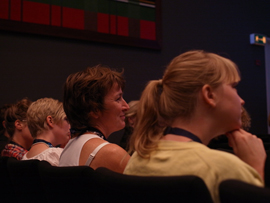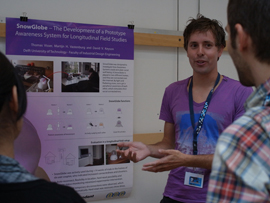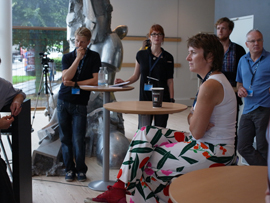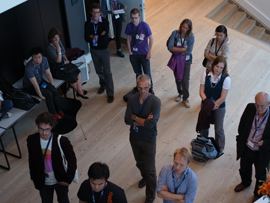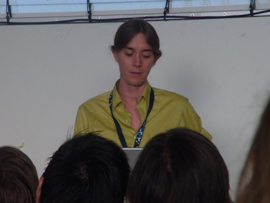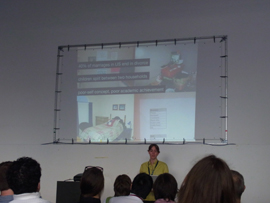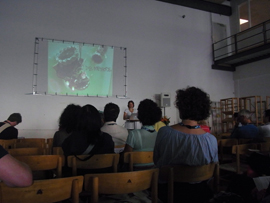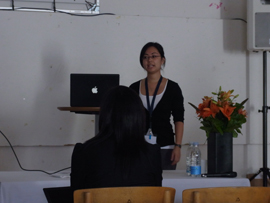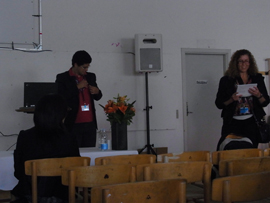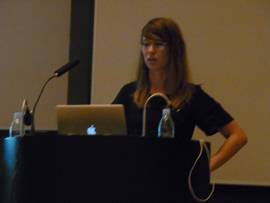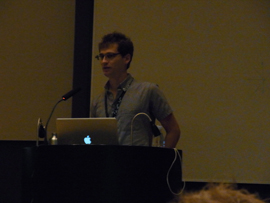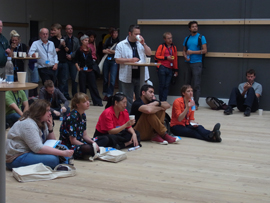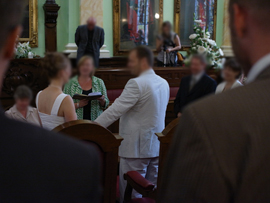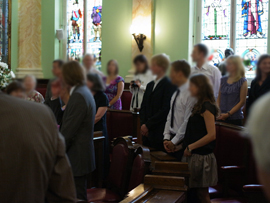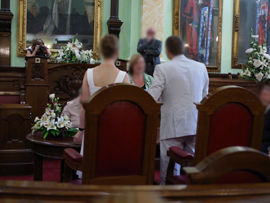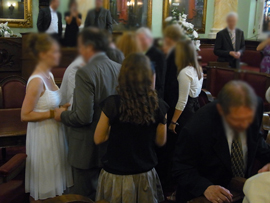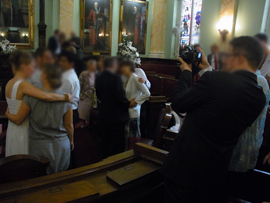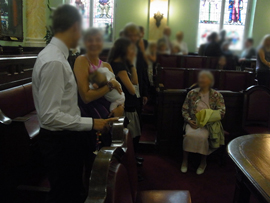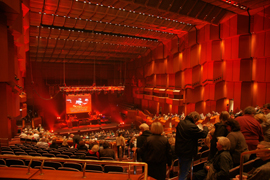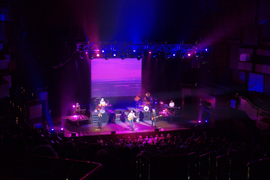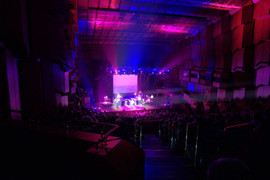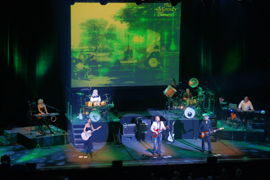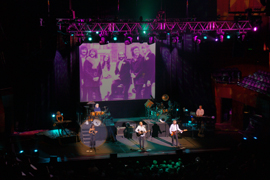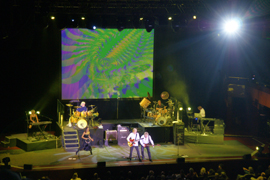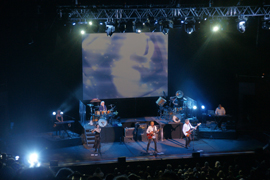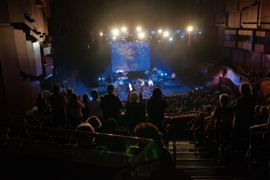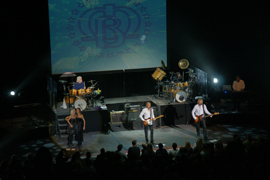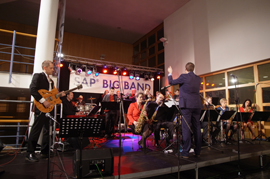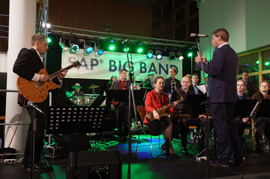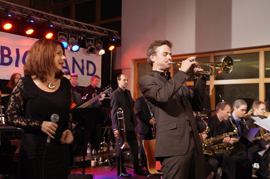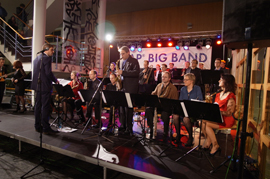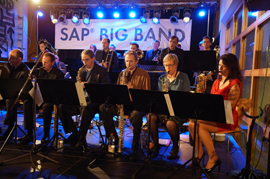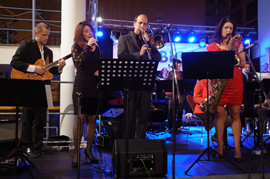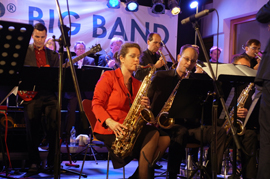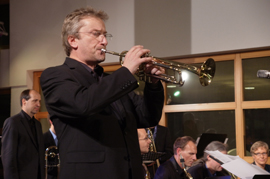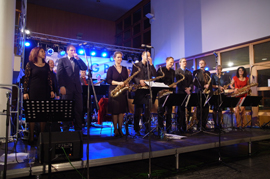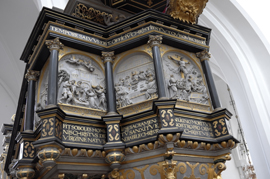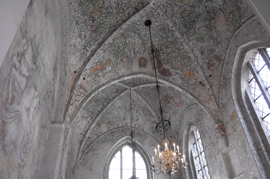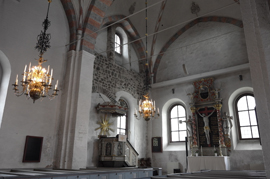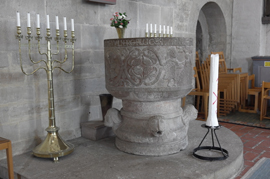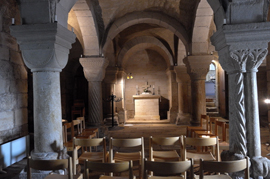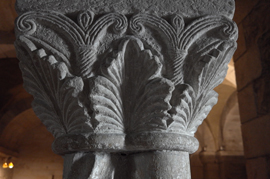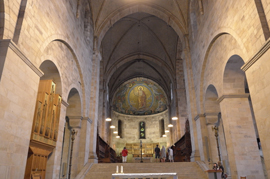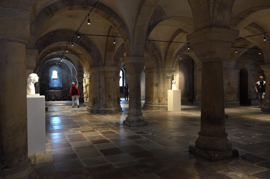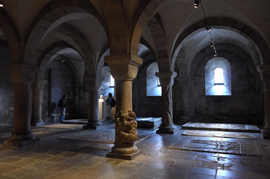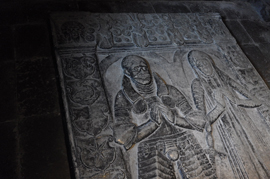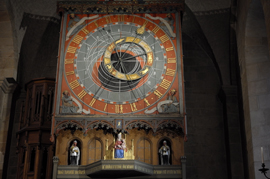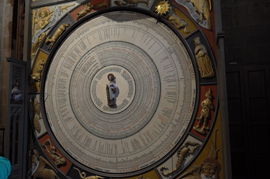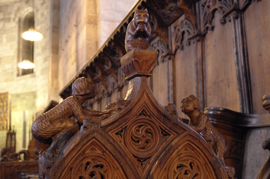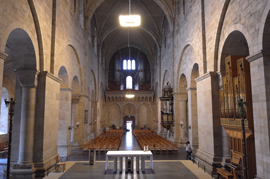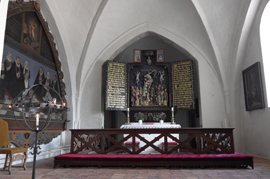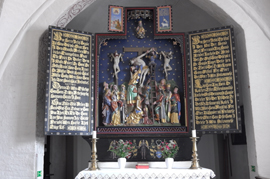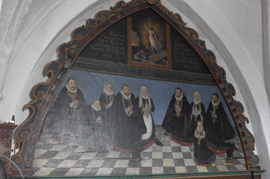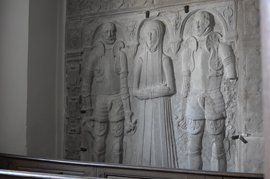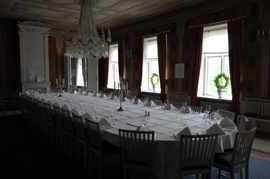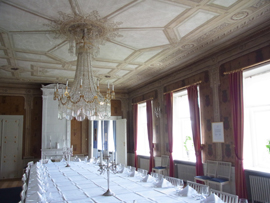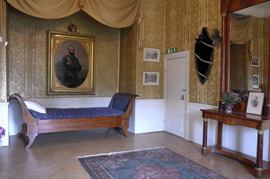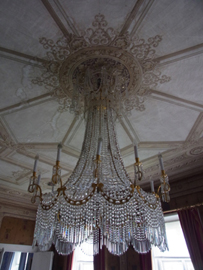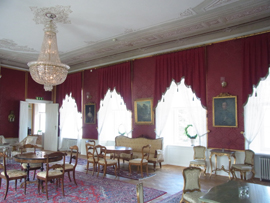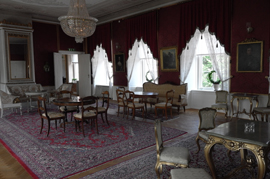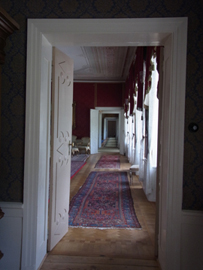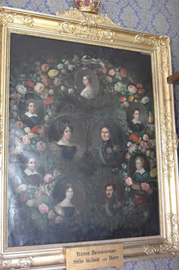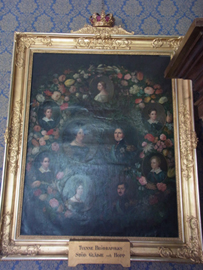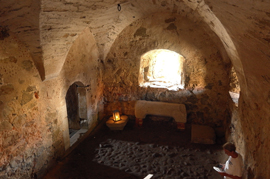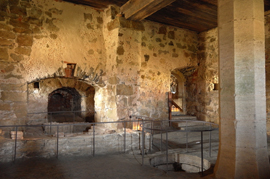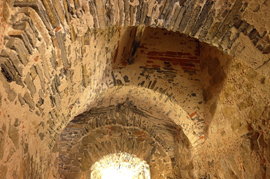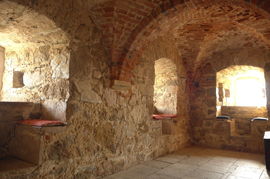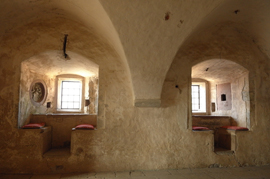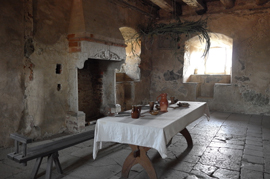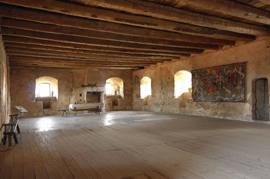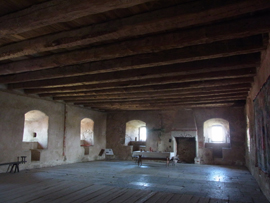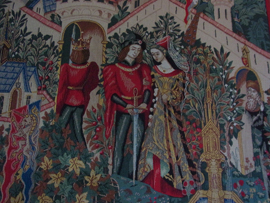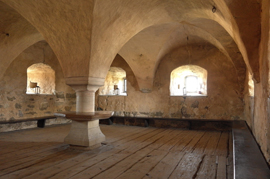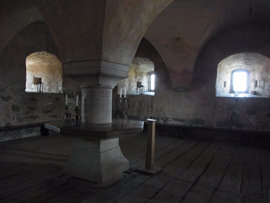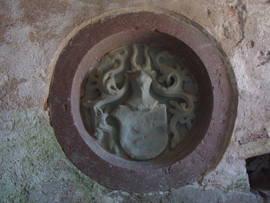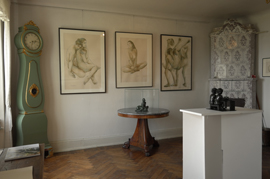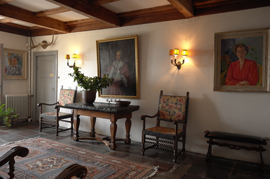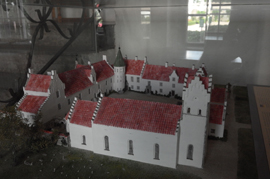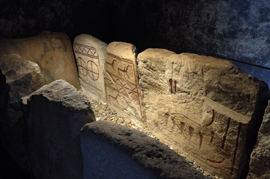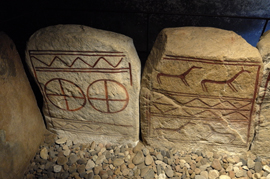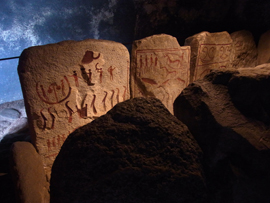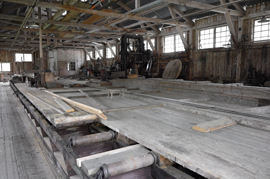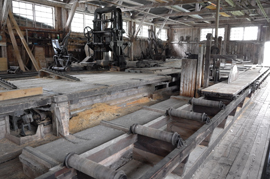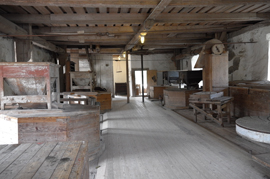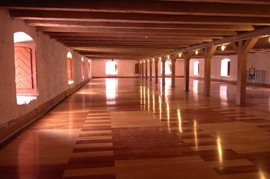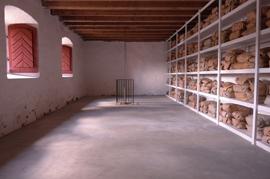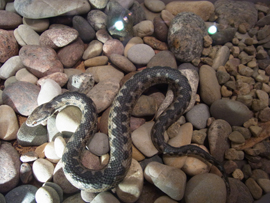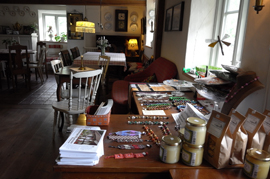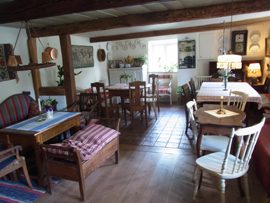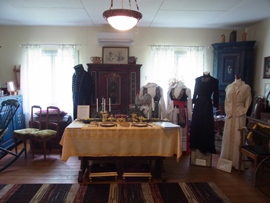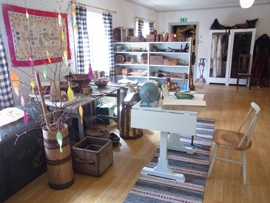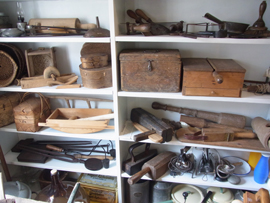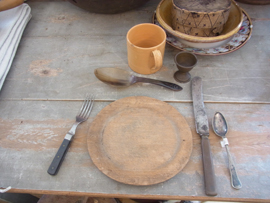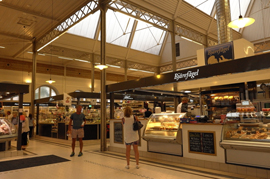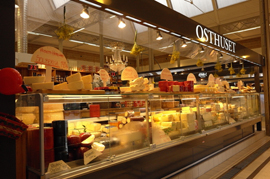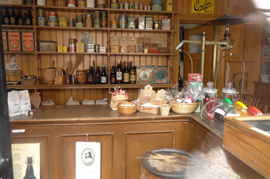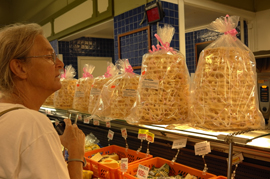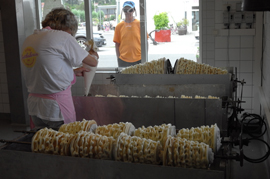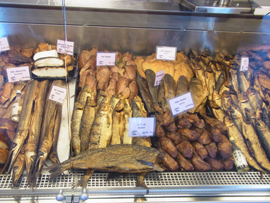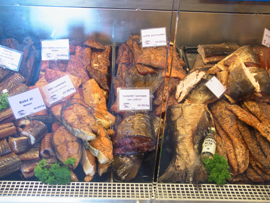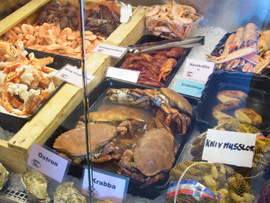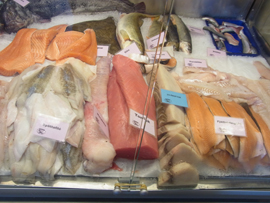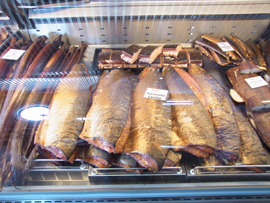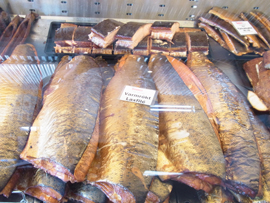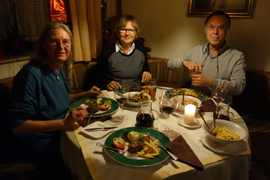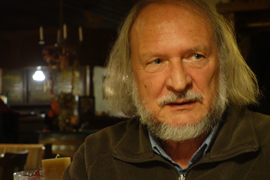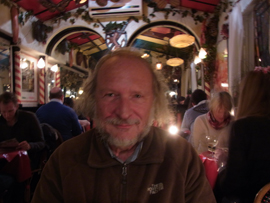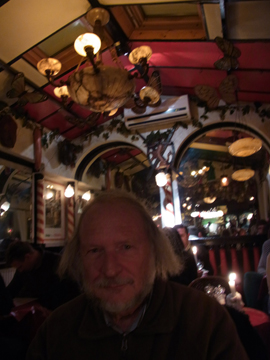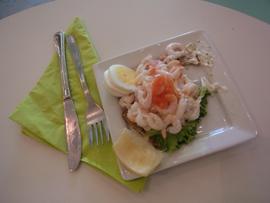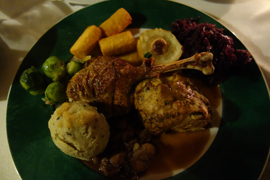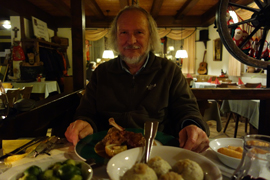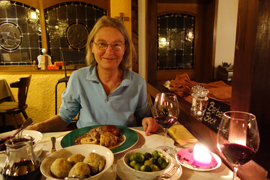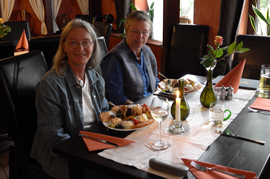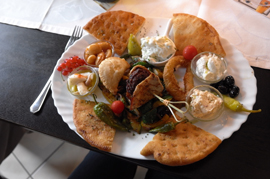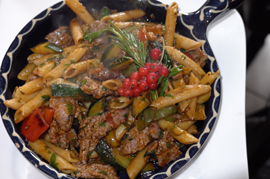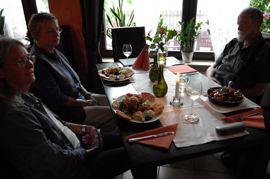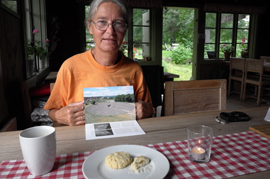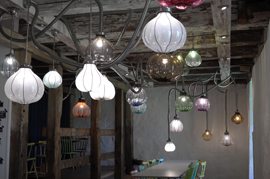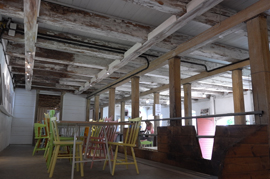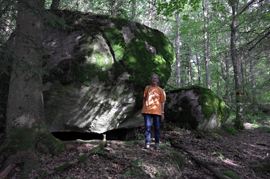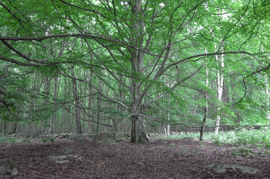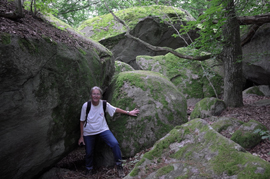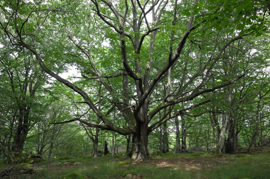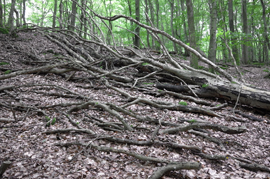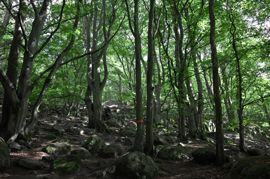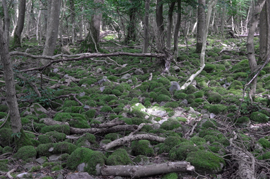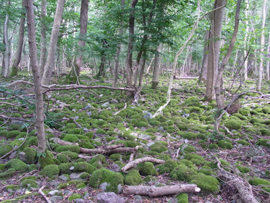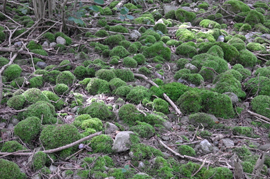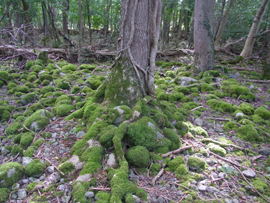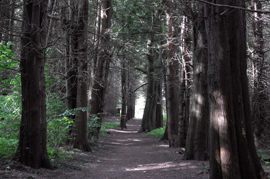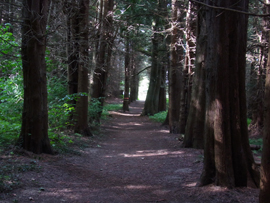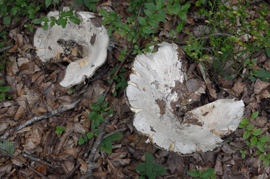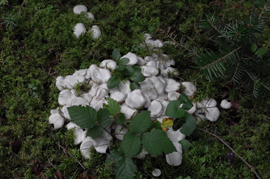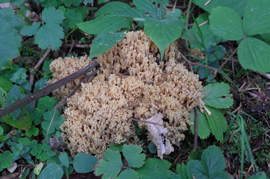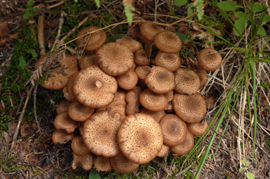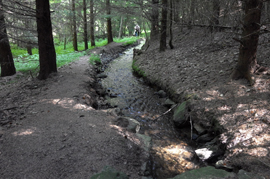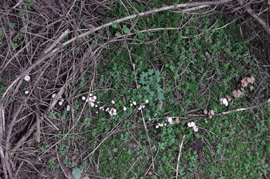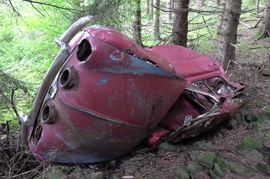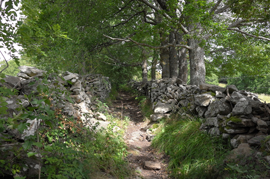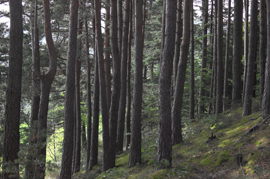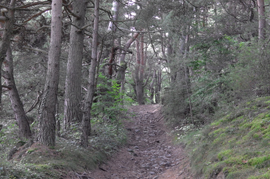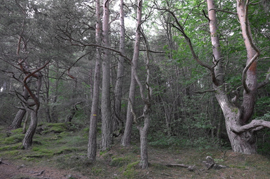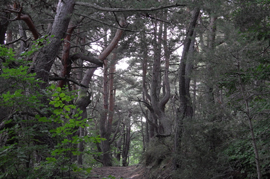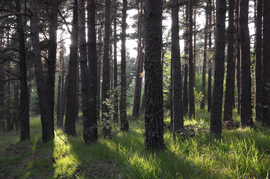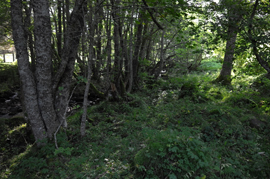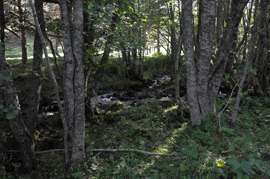General: Physical Limits of Photography: Insufficient Light - Part 6
Part 1 | Part 2 | Part 3 | Part 4 | Part 5 | Part 6 | Part 7
Examples of Conditions of Insufficient Light - Specific Situations | References
In this series of articles, I will describe an example of where photography is reaching the limits of physics, namely, when light is scarce. Many photographers expect even in this case that their camera delivers perfect photos. In this series, I will try to explain why this is not possible. And I would also like to address the differences between large and small sensors, because I have the impression that many owners of compact cameras expect too much from their small-sensor cameras, among others, because they ignore or do not know what the difference implies.
The first part in the series serves as an introduction to the topic, asks for reasons for unsatisfactory, particularly blurry, photos, and discusses possible "countermeasures". In the second and third parts, which are supplemented by additional pages with test images, I compare cameras with sensors of different sizes with respect to their performance at different ISO values. In the fourth part, I present the concept of an "exposure value" (EV) as a measure of the amount of light that is available for a photo and present sample photos for illustration. In the fifth and in this sixth parts, I present examples of situations in which only little light is available. For illustration, I provide the exposure values and other photographic data. In the seventh and last part, I try to summarize the results.
Examples of Conditions of Insufficient Light - Specific Situations
Now I would like to discuss and present some more specific practical examples. Basically, I provide some general information taken from my own photographic practice and then present some example photos of my own (or from my wife). There is no intention to cover the respective topics thoroughly. For the example photos, I list the exposure level (EV) as given by the camera, shutter speed, aperture, and ISO value to give an impression of the existing brightness and thus, the available photographic options.
Conferences, Meetings
Many photographers have problems with taking usable photos at meetings and conferences. And I am one of them. Some people believe that cell phones are a posible solution to this dilemma: Often, I saw students or participants taking photos with their cell phone - and from a distance these looked quite OK (you can often see the screens). But the cell phone photos that I have received from colleagues in order to publish them on a Website were often insufficient even for this purpose. And I have to admit that my own attempts also failed often and were not at all satisfactory.
I found that conferences have some special characteristics and would like to mention them here. Typically, there is a lecturer in front of a brightly lit screen. Sometimes, he or she is shone and is then often outshined. Sometimes, he or she stands in the dark and can then hardly be put together with the slides on one photo. Often, the lighting is generally too weak, so that the speakers are hard to photograph. Mostly, I was far away from the speakers, so that they turned out very small on the photos when I did not have a telephoto lens at my disposal. Moreover, often zoom lenses are less bright at the telephoto position than in the wide-angle position.
Rarely, the smaller lecture rooms were lit by daylight, and if so, only weakly, so that it was difficult here, too, to get sharp photos of the speakers. Pictures in the exhibition halls usually worked best for me, although the artificial light was "just so" and not really sufficient for perfect photos.
On a separate page you will find a larger number of photos that were taken at two conferences (in 2009 and 2010). Here is a selection of it:
Weddings, Family Events
Weddings seem to present a particular challenge for photographers, since they often take place in rooms that are poorly lit by daylight. I will just mention one example, namely a wedding in our family, at which I more or less failed to take good photos with my Ricoh GXR camera units: Since the ceremony took place in a very large room and therefore, was far away from me, I needed a telephoto lens for taking photos of it. The GXR P10 camera unit was sufficient for this purpose at to the needed focal lengths, but its small sensor was overwhelmed at ISO 800 and generated a lot of noise, as the examples below show. As a result result, the photos looked like painted and blurry. I also used the GXR A12-50 camera unit (APS-C) to get better image quality, but I did not dare to go beyond ISO 1600. In the dark room, the camera unit was unable to focus automatically (AF-focus light would have disturbed the ceremony and would not have helped in the distance). So I focused manually and often failed because of the dark viewfinder image... The exposure values were in a range from EV 4 to nearly 6 (corrected for exposure compensation), which explains my issues a bit...
Photos of family events are subject to similar conditions as taking indoor shots at home and photos in restaurants. Often, the rooms are larger, however, and you have to cope with mixed lighting during the day, so that it is often unavoidable to use a flash. Sometimes, the celebrations are also held outdoors. Then, there is, of course, more light available (except at night).
I show a only few wedding photos here, deliberately not the best ones, which are just meant to demonstrate the lighting conditions at the wedding, and not so much show the people. Therefore, I blurred the faces of the persons. I also do not present photos of other family events, since the people on the photos would probably not agree to a publication...
| Wedding | ||
EV 5.3: 1/100 s, f/2.5, ISO 1600, EV -0.7
(A12-50) |
EV 5.3: 1/100 s, f/2.5, ISO 1600 (A12-50) |
EV 4.3: 1/50 s, f/2.5, ISO 1600, EV -0.3 (A12-50) |
EV 5.0: 1/15 s, f/4.1, ISO 800, EV -0,7 (P10) |
EV 5.9: 1/40 s, f/3.5, ISO 800, EV -0.7 (P10) |
EV 5.9: 1/40 s, f/3.5, ISO 800,
EV -0.7 (P10) |
Events (Concerts, ...)
This topic is also a huge field, and I do not have much photographic experience in this area. I photographed at some concerts of the SAP Big Band and also - very remotely - at a Moody Blues concert. Generally, at concerts, the artists are well lit, but usually not as good as you would hope for. In addition, they are often far away from you so that it is not possible to portray them satisfactorily.
At the Moody Blues concert in 2008, I used a Sony A700 DSLR with an APS-C sensor. At that time, even such cameras showed a lot of noise at higher ISO values so that I did not dare to go beyond ISO 400. Accordingly, I had fairly long shutter speeds, and many of my shots are blurred (not shown here). Moreover, the Tele-zoom that I used was not particularly bright... I assume that the higher exposure levels in some of the photos were, at least in part, caused by the spotlights that were directed towards the camera.
Exposure compensation was set to EV -1.7 for all images to avoid glare. This means that about 2 exposure value levels can be subtracted from the exposure values in the table below (this does not seem to work linearly for my cameras), so that the actual exposure levels were typically closer to EV 6-7.
For the SAP Big Band Concert in 2012, I used a Ricoh GXR with A16 24-85-camera unit. Here I set ISO to 1600, but the lighting allowed only for relatively long exposure times (exposure values center around EV 5). This was a problem particularly for telephoto shots, because the maximum aperture was smaller in the telephoto position of the lens. Here I set an exposure compensation of just EV -0.3, which can be neglected..
On a separate page you will find a larger number of photos that were taken at both concerts. Here is a selection of it:
| Moody Blues Concert 2008 - Sony A700 | ||
EV 4.9: 1/10 s, f/3.5, ISO 400,
EV -1.7 (SA700) |
EV 7.0: 1/20 s, f/5.0, ISO 400,
EV -1.7 (SA700) |
EV 5.3: 1/10 s, f/4, ISO 400,
EV -1.7 (SA700) |
EV 7.6: 1/25 s, f/5.6, ISO 400,
EV -1.7 (SA700) |
EV 8.0: 1/40 s, f/5.0, ISO 400,
EV -1.7 (SA700) |
EV 8.6: 1/50 s, f/5.6, ISO 400,
EV -1.7 (SA700) |
EV 9.6: 1/100 s, f/5.6, ISO 400,
EV -1.7
(SA700) |
EV 9.0: 1/50 s, f/6.3, ISO 400,
EV -1.7
(SA700) |
EV 10.3: 1/160 s, f/5.6, ISO 400,
EV -1.7
(SA700) |
| SAP Big Band 2012 - Ricoh GXR A16 24-85 | ||
EV 4.5: 1/30 s, f/3.5, ISO 1600,
EV -0.3 (GXRA16) |
EV 5.5: 1/40 s, f/4.2, ISO 1600,
EV -0.3 (GXRA16) |
EV 5.2: 1/25 s, f/4.8, ISO 1600,
EV -0.3 (GXRA16) |
EV 4.5: 1/30 s, f/3.5, ISO 1600,
EV -0.3 (GXRA16) |
EV 5.0: 1/30 s, f/4.2, ISO 1600,
EV -0.3 (GXRA16) |
EV 5.0: 1/30 s, f/4.2, ISO 1600,
EV -0.3 (GXRA16) |
EV 5.5: 1/25 s, f/5.4, ISO 1600,
EV -0.3 (GXRA16) |
EV 5.6: 1/25 s, f/5.5, ISO 1600,
EV -0.3 (GXRA16) |
EV 5.2: 1/40 s, f/3.8, ISO 1600,
EV -0.3 (GXRA16) |
Churches (Interior)
Particularly in churches, we took an awful lot of photos. Usually, there is very little light available and therefore, churches are indeed a challenge for photographers. Typically, you are not allowed to use the flash. But I do not want to use it anyway. And in many cases it is not possible if I would want to, because of the distances and dimensions of the rooms. In large churches, it makes sense to set distance manually to infinity if you want to photograph the church premises. In the following, I present some examples with associated data to give you an idea of what to expect with respect to lighting conditions in churches.
By the way: Before I enter a church, I turn the camera sounds off.
On a separate page you will find a larger number of photos that were taken in churches (all photos from southern Sweden, August 2014). Here is a selection of it:
EV 6.7: 1/40 s, f/4.5, ISO 800 (LXV) |
EV 7.3: 1/80 s, f/4, ISO 800 (LXV) |
EV 6.3: 1/80 s, f/4, ISO 1600 (LXV) |
EV 4.7: 1/20 s, f/4.6, ISO 1600 (LXV) |
EV 3.5: 1/30 s, f/3.5, ISO 3200, EV -0,7 (LXV) |
EV 4.7: 1/40 s, f/4.5, ISO 3200, EV -0.7 (LXV) |
EV 3.5: 1/30 s, f/3.5, ISO 3200 (LXV) |
EV 2.3: 1/13 s, f/3.5, ISO 3200, EV -1 (LXV) |
EV 3.3: 1/25 s, f/3.5, ISO 3200, EV -1 (LXV) |
EV 3.5: 1/30 s, f/3.5, ISO 3200, EV -1 (LXV) |
EV 5.6: 1/25 s, f/3.5, ISO 1600, EV -0.7 (LXV) |
EV 4.9: 1/40 s, f/3.5, ISO 1600, EV -0.3 (LXV) |
EV 2.7: 1/8 s, f/5.1, ISO 3200 (LXV) |
EV 3.9: 1/40 s, f/3.5, ISO 3200 (LXV) |
EV 4.9: 1/40 s, f/3.5, ISO 1600 (LXV) |
EV 3.8: 1/10 s, f/4.7, ISO 1600 (LXV) |
EV 4.3 1/15 s, f/4.6, ISO 1600, EV -0.7 (LXV) |
EV 5.1: 1/10 s, f/5.2, ISO 800 (LXV) |
Castles, Fortresses, and Museums (Interior)
In castles, there is usually more light available, usually, a mixture of daylight and artificial lights. Fortresses may be very dark, depending on the amount of artificial lighting. Museums differ, depending on their type, some are completely artificially lighted, while others are similar to castles, lighted by daylight or mixed light. Note that in many castles and museums, it is not allowed to take photos, or you need to obtain a permit. Sometimes only the use of flashlights is restricted.
On a separate page you will find a larger number of photos that were taken in castles, fortresses, and museums (all photos from southern Sweden, August 2014). Here is a selection of it:
| Castles | ||
EV 8.3: 1/250 s, f/4.5, ISO 1600 (LXV) |
EV 7.0: 1/21 s, f/3.5, ISO 200, EV +0.3 (CX4) |
EV 4.9: 1/40 s, f/3.5, ISO 1600 (LXV) |
EV 8.2: 1/32 s, f/3.5, ISO 130, EV -1 (CX4) |
EV 7.4: 1/28 s, f/3.5, ISO 200, EV +0.3 (CX4) |
EV 8.6: 1/250 s, f/5.0, ISO 1600 (LXV) |
EV 9.5: 1/52 s, f/3.5, ISO 100, EV -1 (CX4) |
EV 5.0: 1/40 s, f/3.7, ISO 3200 (LXV) |
EV 6.9: 1/18 s, f/3.7, ISO 200, EV -1 (CX4) |
| Fortresses | ||
EV 2.9: 1/20 s, f/3.5, ISO 3200 (LXV) |
EV 1.6: 1/8 s, f/3.5, ISO 3200 (LXV) |
EV 0.6: 1/4 s, f/3.5, ISO 3200 (LXV) |
EV 5.6: 1/100 s, f/4, ISO 3200 (LXV) |
EV 6.7: 1/160 s, f/4.5, ISO 3200 (LXV) |
EV 4.9: 1/60 s, f/4, ISO 3200 (LXV) |
EV 3.9: 1/40 s, f/3.5, ISO 3200 (LXV) |
EV 5.6: 1/16 s, f/3.5, ISO 400, EV -1 (CX4) |
EV 3.6 : 1/4 s, f/3.5, ISO 400, EV -1 (CX4) |
EV 3.3: 1/25 s, f/3.5, ISO 3200 (LXV) |
EV 5.2: 1/24 s, f/3.5, ISO 800, EV -1 (CX4) |
EV 7.3: 1/52 s, f/3.5, ISO 400, EV -1 (CX4) |
| Museums | ||
EV 9.3: 1/50 s, f/3.5, ISO 100 (LXV) |
EV 6.9: 1/60 s, f/4, ISO 800 (LXV) |
EV 8.3: 1/160 s, f/8, ISO 3200 (LXV) |
EV 3.5: 1/30 s, f/3.5, ISO 3200 (LXV) |
EV 3.5: 1/30 s, f/3.5, ISO 3200 (LXV) |
EV 4.8: 1/9 s, f/3.5, ISO 400 (CX4) |
EV 7.7: 1/160 s, f/4.5, ISO 1600 (LXV) |
EV 6.6: 1/100 s, f/4, ISO 1600 (LXV) |
EV 6.6: 1/100 s, f/4, ISO 1600 (LXV) |
EV 6.3: 1/80 s, f/4, ISO 1600 (LXV) |
EV 4.9: 1/30 s, f/3.5, ISO 1250 (LXV) |
EV 7,1: 1/23 s, f/3.5, ISO 200 (CX4) |
EV 6.6: 1/100 s, f/4, ISO 1600 (LXV) |
EV 5.4: 1/7 s, f/3.5, ISO 200 (fuzzy) (CX4) |
EV 6.1: 1/11 s, f/3.5, ISO 200 (CX4) |
EV 7.2: 1/24 s, f/3.5, ISO 200 (CX4) |
EV 7.5: 1/30 s, f/3.5, ISO 200 (CX4) |
EV 5.9: 1/10 s, f/3.5, ISO 200 (CX4) |
Halls, Market Halls, Shops, Restaurants (Interior)
Market halls and other venues, as well as shops are usually well lit with artificial light. For cameras, these lighting condition may nevertheless be a bit challenging. In addition to shots of the hall or parts of it, it is a good idea to take photos of the shop displays - but not always will the dealers agree with this. Photos in restaurants can also face very different lighting conditions, f/rom daylight, to mixed light, up to pure artificial light. Again, the lighting conditions can be regarded as critical.
In the following, I present some examples from Sweden (August 2014) with associated data to give you an idea of what lighting conditions you can expect in halls and shops. The restaurant photos are from diverse locations.
| Market Halls, Shops - Sweden (August 2014) | ||
EV 8.0: 1/320 s, f/5.0, ISO 3200 (LXV) |
EV 8.3: 1/400 s, f/5.0, ISO 3200 (LXV) |
EV 5.3: 1/80 s, f/4, ISO 3200 (LXV) |
EV 8.3: 1/125 s, f/4.5, ISO 800
(LXV) |
EV 11.0: 1/800 s, f/6.3, ISO 1600 (LXV) |
EV 8.4: 1/42 s, f/4, ISO 200 (CX4) |
EV 8.3: 1/36 s, f/4.2, ISO 200 (CX4) |
EV 8.8: 1/48 s, f/4.2, ISO 192 (CX4) |
EV 9.4: 1/42 s, f/4, ISO 100 (CX4) |
EV 8.1: 1/32 s, f/3,5. ISO 141 (CX4) |
EV 8.1: 1/34 s, f/4, ISO 200 (CX4) |
|
| Restaurants | ||
EV 4.9: 1/100 s, f/2.2, ISO 1600 (RX100) |
EV 4.3: 1/13 s, f/4.9, ISO 1600 (RX100) |
EV 3.6: 1/2 s, f/3.5, ISO 200, EV -0.7 (fuzzy,
CX4) |
EV 4.2: 0,3 s, f/3.5, ISO 200, EV -0.7 (fuzzy,
CX4) |
EV 7.8: 1/32 s, f/3.5, ISO 176, EV -0.7 (CX4) |
EV 2.0 : 1/20 s, f/1.8, ISO 1600 (RX100) |
| EV 2.6: 1/30 s, f/1.8, ISO 1600 (RX100) |
EV 2.0: 1/20 s, f/1.8, ISO 1600 (RX100) |
EV 5.3: 1/25 s, f/5.0, ISO 1600 (LXV) |
EV 4.7: 1/20 s, f/4.5, ISO 1600 (fuzzy)
(LXV) |
EV 5.9: 1/60 s, f/5.6, ISO 3200 (LXV) |
EV 6.3: 1/125 s, f/4.5, ISO 3200 (LXV) |
| EV 9.0: 1/125 s, f/8, ISO 1600 (LXV) |
EV 8.3: 1/100 s, f/5.1, ISO 800 (LXV) |
EV 6.9: 1/80 s, f/3.5, ISO 800 (LXV) |
Forests, Woods
Forests are considered to be dark and therefore, close-ups of mushrooms or plants are mostly difficult to take - be it that camera shake is possible (long exposure times), the depth of field is too low (large apertures), or both. On closer inspection, however, it shows that it it can be very differently bright in forests. In sparse deciduous forests, it can often be brighter than indoors, while it may be almost "dark" in dense coniferous forests. Hhigh light contrasts when the sun shines into the forest and creates bright "sun spots" can also make taking photos in forests challenging. All in all, I cannot make any general recommendations for taking photos in forests - except that I recommend using a tripod for taking photos of mushrooms...
On a separate page you will find a larger number of photos that were taken in forests and woods (Southern Sweden and Haute Loire, France, both in 2014). Here is a selection of it:
References
- Elmar Baumann: Lichtwert, Lichtwert-Diagramm (www.elmar-baumann.de/fotografie/fragen/lichtwert.html) (in German)
| 14.02.2016 |

